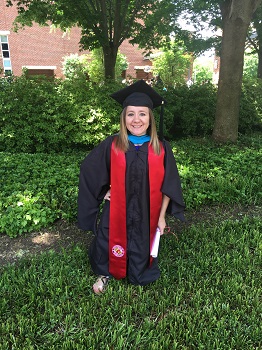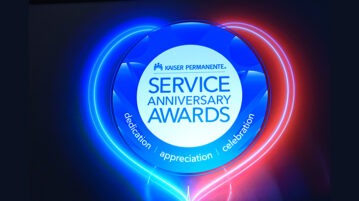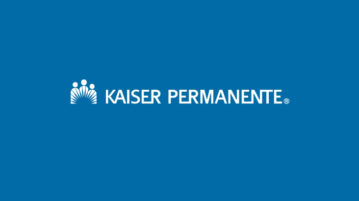Many people live their entire life without ever fracturing or breaking a bone. But what if you could fracture a bone just by bumping into something, rolling over in bed, or even sneezing? For people born with osteogenesis imperfecta, also known as “brittle bone disease,” fragile bones are just part of life.
OI is a rare genetic disorder that affects an estimated 25,000 to 50,000 people in the United States. How severely someone is affected can vary greatly, ranging from a few broken bones or fractures, to several hundred over their lifetime.
Jessica Minor, a program coordinator working in Kaiser Permanente’s Mid-Atlantic States Region, was diagnosed with OI at 9 months. As the name suggests, people with OI have fragile skeletons, but for Jessica, the fragility stops there. She’s confident, compassionate and doesn’t let her disability define or limit her. Outside of work, she loves cooking, yoga, travel and spending time with her husband, family and friends. She embodies “Unbreakable Spirit,” the official slogan of the Osteogenesis Imperfecta Foundation.

This is her story
I have one of the least severe types of OI so I’ve had relatively few fractures and breaks, which is when the bone breaks all the way through, compared to others with OI who have had hundreds. Like most people with the disorder, I have metal rods in my leg bones to make them straighter and stronger, and for most of my life, I’ve relied on a walker or a wheelchair to get around.
I don’t remember my parents ever sitting me down to talk about living with OI, what that meant for my future, what could happen, or what I could or couldn’t do. As a family, we just dealt with my experiences as they happened.
I do remember that my parents were always advocating for me. This was incredibly important because with a disorder like OI, you’re combating strong assumptions and stereotypes about your limitations and your abilities. My parents taught me to speak up for myself at an early age. I was taught to ask for what I needed to be successful, and to make sure people understood that I knew what was best for me and what I was capable of, even at a very young age.
Creating awareness a critical step forward
In elementary and middle school, I would get up in front of my class at the beginning of every year and explain to them about my disability. In high school, this seemed like the wrong approach, so I started educating teachers and friends individually. This is great and has been very successful, but I know that educating people about OI is a lifelong project.
Because it’s so rare, most people who hear “brittle bone disease” immediately assume that you can’t do anything without hurting yourself. The reality is that you can live a very normal life with OI and I want to emphasize that people with OI are their own best judges. Even if you think they are taking risks or doing things that are dangerous for them, you have to let them live their lives. That is the most critical part of my awareness campaign.
However, the aspect of OI that people don’t realize is that it’s a collagen disorder and has a much broader effect on the body than just bones. In fact, as you age with OI, you usually have fewer fractures and broken bones — instead other issues surface, such as respiratory and joint problems.

Building a career at Kaiser Permanente
Throughout elementary, middle and high school, I always had amazing and supportive teachers and every accommodation I needed to be successful. When I went away to college, I was lucky to live in a small community where people quickly learned about my disability. Not only did I receive great support from my professors and the university overall, but the university police were kind enough to salt the walkway near my building so I could get to and from class in my wheelchair.
When I moved to Washington, D.C., for my first job at the Osteogenesis Imperfecta Foundation, I was fortunate to connect with wonderful mentors who helped me navigate the challenges of living in the big city and find internships that helped build the foundation for my future career.
I had a similar situation with Kaiser Permanente. I started as a student fellow with the Mid-Atlantic States’ Community Benefit organization, supporting the Community Health Needs Assessment, and loved the work. After completing the fellowship and then working for another company for a year, my team at Kaiser Permanente hired me full-time as a Community Benefit program coordinator. And Kaiser Permanente has been wonderful in meeting my accommodation needs — especially my manager, who reached out to me before I even started to determine my needs, and Marc Wilkerson, my disability case manager, who was incredibly professional and supportive.
Embracing the benefits of yoga
Growing up with a disability was challenging, especially one that people didn’t understand, but my disability helped me find my path. … Overcoming these challenges, and others, helped me gain the confidence to attend college in Cincinnati and to move halfway across the country to Washington, D.C., a city where I didn’t know anyone. And it has given me the confidence to pursue so many things that I’ve achieved in life.
When I was younger, I participated in multiple clinical trials involving pills and IVs over a period of years, with minimal results. I can’t say that my bones are stronger now than when I was young, but I definitely have fewer breaks and fractures. I attribute this partially to better balance, paying more attention and increasing my core strength through yoga.




